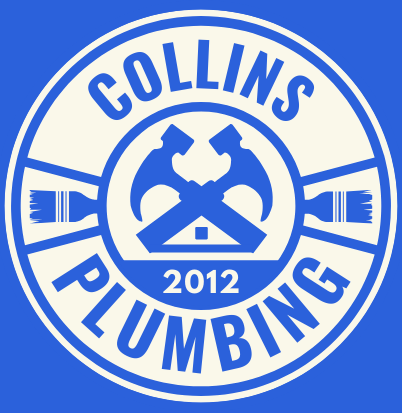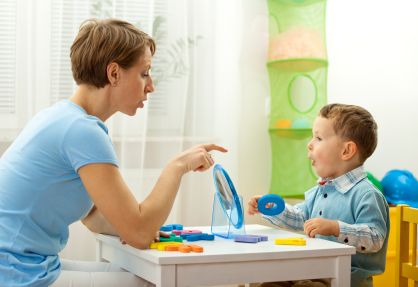
Speech therapy is a specialized field that focuses on helping individuals improve their communication skills. It involves the assessment, diagnosis, and treatment of speech and language disorders. Speech therapy techniques are designed to address a wide range of communication difficulties, including articulation disorders, fluency disorders, language disorders, voice disorders, and more. The goal of speech therapy is to improve an individual’s ability to communicate effectively and confidently.
Communication is an essential aspect of human interaction. It allows us to express our thoughts, feelings, and needs, as well as understand and connect with others. For individuals with communication difficulties, speech therapy can be life-changing. It provides them with the tools and strategies they need to overcome their challenges and communicate more effectively.
Understanding the Importance of Communication Improvement
Communication plays a vital role in our daily lives. It is how we express ourselves, build relationships, and navigate the world around us. When communication is impaired, it can have a significant impact on an individual’s quality of life.
Communication difficulties can lead to frustration, isolation, and low self-esteem. Individuals may struggle to express their thoughts and ideas, leading to misunderstandings and misinterpretations. This can affect their relationships with family, friends, and colleagues. In addition, communication difficulties can hinder academic and professional success.
Common Speech Disorders and their Impact on Communication
There are several common speech disorders that can affect an individual’s ability to communicate effectively. These include articulation disorders, fluency disorders, language disorders, voice disorders, and more.
Articulation disorders involve difficulties with producing speech sounds correctly. This can result in unclear or distorted speech. Individuals with articulation disorders may struggle to pronounce certain sounds or substitute one sound for another.
Fluency disorders involve disruptions in the flow of speech. The most well-known fluency disorder is stuttering, which is characterized by repetitions, prolongations, or blocks in speech. Individuals with fluency disorders may experience anxiety and self-consciousness about their speech.
Language disorders involve difficulties with understanding and using language. This can affect both spoken and written language. Individuals with language disorders may struggle with vocabulary, grammar, comprehension, and expression.
Voice disorders involve abnormalities in the production of vocal sounds. This can result in a hoarse, breathy, or strained voice. Voice disorders can be caused by various factors, including vocal cord nodules, polyps, or paralysis.
Techniques for Articulation Improvement
Articulation refers to the physical movements involved in producing speech sounds. Articulation therapy techniques focus on improving an individual’s ability to produce sounds correctly and intelligibly.
One technique commonly used in articulation therapy is auditory discrimination training. This involves helping individuals distinguish between different speech sounds by listening to and identifying them. By developing their ability to discriminate between sounds, individuals can improve their articulation skills.
Another technique used in articulation therapy is sound production practice. This involves practicing the correct production of specific speech sounds through repetition and imitation. The therapist may use various activities and exercises to target specific sounds and help individuals develop the necessary muscle coordination for accurate articulation.
Strategies for Fluency Improvement
Fluency refers to the smoothness and flow of speech. Fluency therapy techniques aim to help individuals improve their fluency and reduce disruptions in their speech.
One technique commonly used in fluency therapy is slow rate of speech. By speaking slowly and deliberately, individuals can reduce the likelihood of stuttering or other fluency disruptions. This technique allows individuals to gain control over their speech and increase their fluency.
Another technique used in fluency therapy is breathing exercises. Proper breathing techniques can help individuals regulate their airflow and reduce tension in the vocal cords, which can contribute to fluency disruptions. Deep breathing exercises and diaphragmatic breathing techniques are often used to promote relaxation and improve fluency.
Language Therapy Techniques for Communication Enhancement
Language therapy focuses on improving an individual’s ability to understand and use language effectively. It involves various techniques and strategies to enhance communication skills.
One technique commonly used in language therapy is vocabulary building. This involves expanding an individual’s knowledge of words and their meanings. The therapist may use activities such as word games, flashcards, and reading comprehension exercises to help individuals develop a robust vocabulary.
Another technique used in language therapy is sentence structure practice. This involves working on sentence formation and grammatical structures. The therapist may provide prompts or visual aids to help individuals construct grammatically correct sentences.
Tools for Voice Improvement and Resonance
Voice and resonance therapy techniques focus on improving the quality, pitch, and volume of an individual’s voice. These techniques can be beneficial for individuals with voice disorders or those who want to enhance their vocal abilities.
One tool commonly used in voice therapy is vocal exercises. These exercises target specific vocal muscles and help individuals develop strength, control, and flexibility in their voice production. Vocal exercises may include humming, lip trills, tongue twisters, and pitch glides.
Another tool used in voice therapy is visual feedback technology. This technology allows individuals to see visual representations of their voice on a screen, which can help them make adjustments and improve their vocal production. Visual feedback technology can be particularly useful for individuals with voice disorders who may have difficulty perceiving changes in their voice without visual cues.
Augmentative and Alternative Communication Techniques
Augmentative and alternative communication (AAC) refers to methods of communication that supplement or replace speech for individuals with severe communication difficulties. AAC techniques can be beneficial for individuals with conditions such as autism spectrum disorder, cerebral palsy, or traumatic brain injury.
One technique commonly used in AAC is the use of communication boards or books. These visual aids contain symbols or pictures that represent words or phrases. Individuals can point to the symbols or pictures to communicate their thoughts and needs.
Another technique used in AAC is the use of electronic devices or apps. These devices allow individuals to select words or phrases using touchscreens, switches, or eye gaze technology. The selected words or phrases are then spoken aloud by the device, enabling individuals to communicate effectively.
Speech Therapy Techniques for Children
Speech therapy for children focuses on improving communication skills and addressing speech and language disorders at an early age. Early intervention is crucial for maximizing a child’s potential for communication development.
One technique commonly used in speech therapy for children is play-based therapy. This involves using play activities to target specific speech and language goals. Play-based therapy allows children to engage in fun and motivating activities while simultaneously working on their communication skills.
Another technique used in speech therapy for children is parent involvement. Parents play a vital role in their child’s communication development, and involving them in therapy sessions can be highly beneficial. Therapists may provide parents with strategies and activities to practice at home, allowing for consistent reinforcement of communication skills.
Future of Speech Therapy Techniques and Communication Improvement
Advancements in technology and research continue to shape the future of speech therapy techniques and communication improvement. New tools and techniques are being developed to enhance the effectiveness of therapy and improve outcomes for individuals with communication difficulties.
One area of advancement is the use of virtual reality (VR) technology in speech therapy. VR allows individuals to engage in realistic and immersive environments, which can be particularly beneficial for practicing social communication skills. VR therapy can provide a safe and controlled environment for individuals to practice real-life scenarios, such as job interviews or public speaking.
Another area of advancement is the use of artificial intelligence (AI) in speech therapy. AI technology can analyze speech patterns and provide real-time feedback on pronunciation, fluency, and other aspects of communication. This can be particularly useful for individuals who do not have access to a speech therapist or who want additional support between therapy sessions.
Speech therapy techniques play a crucial role in improving communication skills and enhancing the quality of life for individuals with communication difficulties. From articulation improvement to fluency enhancement, language therapy, voice improvement, and AAC techniques, there are various approaches available to address different speech disorders and communication needs. The future of speech therapy holds exciting possibilities with advancements in technology and research, promising even more effective and personalized interventions for individuals with communication difficulties.
If you’re interested in learning more about speech therapy techniques and tools for communication improvement, you may find this article on “The Benefits of Using Augmentative and Alternative Communication (AAC) Devices” helpful. AAC devices are designed to assist individuals with communication difficulties by providing alternative means of expression. This article explores the various types of AAC devices available and discusses their benefits in enhancing communication skills. To read more about this topic, click here.



